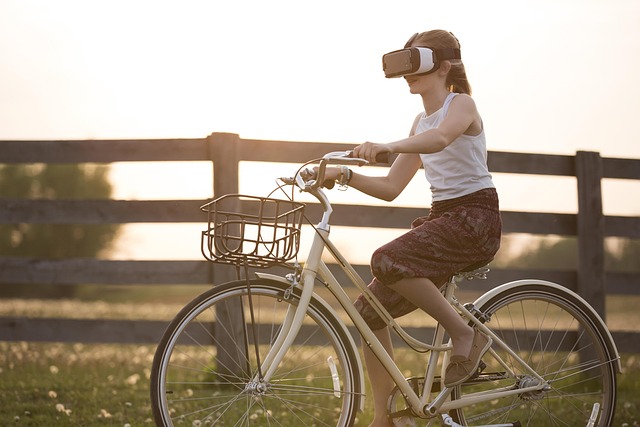Intro: AR Isn’t Sci-Fi Anymore
Augmented Reality, or AR, is the tech that layers digital content onto the real world. Unlike Virtual Reality, which builds whole new worlds, AR works with what’s already around you—adding visuals, info, or interactivity through your phone, glasses, or other devices. It’s not some far-off concept anymore; AR is showing up in everyday media, and it’s sticking.
So why is it becoming a pillar of modern media? Because it bridges attention gaps. People scroll fast, tune out quicker—but when content responds to their environment or actions, it holds them. AR makes passive watching feel dull in comparison. Instead of just consuming content, viewers become part of it.
The days of AR being just Snapchat filters or Pokémon Go gimmicks are over. Now we’re seeing AR being used for in-depth brand activations, interactive documentaries, and even hyper-local journalism. It’s not just clever tech—it’s a tool that drives deeper engagement. And in a media landscape drowning in noise, that matters more than ever.
The New Layer of Interaction
Augmented Reality isn’t just a flashy add-on anymore—it’s shifting how we consume and connect with media. AR layers visual or contextual enhancements over existing formats, turning a flat experience into a multidimensional one. Think of it like this: instead of just watching a sports recap, AR lets you rotate the play from every angle on your coffee table. Instead of reading a magazine piece on ancient Rome, you’re walking through a 3D reconstruction of the forum with info popping up as you explore.
This isn’t just cool for the sake of cool. It changes how users engage. Media outlets like The New York Times have integrated AR into special features, letting readers interact with data visualizations or immersive environments mid-scroll. Entertainment brands like Netflix have dabbled in promo-based AR experiences, turning passive viewers into participants.
And it works. Studies show viewer retention can jump by over 30% when AR elements are involved, especially when the experience encourages direct interaction within the first 10 seconds. Engagement isn’t about keeping eyes on the screen anymore—it’s about pulling people into the story.
In 2024, expect more of this: AR becoming the glue between media and audience—not just delivering information, but offering a space to experience it.
AR and the Evolution of Storytelling
Storytelling in media isn’t just about narrating anymore—it’s about pulling the viewer into the middle of the scene. With AR, audiences don’t just watch a story unfold; they walk through it, tap into it, influence it. This shift from passive consumption to active participation is pushing media to a new level.
Journalism is using AR to recreate moments—think crime scenes, protest marches, or disaster zones—where users explore details on their own terms. Instead of showing a clip, you invite the viewer to stand inside the story. AR documentaries are offering interactive timelines, clickable facts, and virtual proximity to subjects that flat footage just can’t match.
In live entertainment, AR overlays turn concerts and sports into hybrid experiences. A music artist performs live, but with holograms or visual effects only visible through the viewer’s phone or headset. Fans don’t just watch—they choose camera angles, unlock backstage content, or even influence the staging in real-time.
This translation from viewer to participant has a side effect: emotional memory. People remember more when they feel involved. Immersive interaction enhances recall and builds stronger emotional ties, whether the content is news, entertainment, or branded storytelling. In short, by handing some control to the audience, AR makes the media experience stick.
Advertising Gets Smarter with AR
AR has quietly flipped the playbook on digital advertising. Think less billboards, more digital layers built into your actual environment. The result? Ads that don’t look—or feel—like ads. We’re seeing brands build interactive placements that users can explore, play with, or ignore without breaking immersion. From trying on sunglasses through a selfie cam to virtually test-driving a car in your living room, personalization is baked into the format.
The next phase? Real-time product placement. Instead of one static commercial, imagine your favorite vlogger’s kitchen changing based on your interests—a coffee machine you’re likely to buy shows up on their counter. It’s contextual, dynamic, and targeted without being invasive.
When it comes to ROI, brands aren’t gambling. They’re using heatmaps, engagement touchpoints, interaction duration, and conversion directly tied to AR moments. The data gives them precision, not just reach. For creators, this opens an opportunity—not just to monetize, but to collaborate in building smarter experiences. Those willing to co-create with brands will stand out. Passive ad reads are drying up. Immersive, creator-led content is the new prime real estate.
Challenges in the AR Media Space
AR has massive potential—but it doesn’t come cheap. High production costs remain one of the biggest barriers to entry. Designing interactive 3D content, integrating it with real-world environments, and ensuring smooth performance across devices takes time, talent, and serious investment. That’s not scalable for every creator, or even for many mid-sized media organizations.
Then there’s the hardware gap. While smartphones can handle basic AR, the more immersive experiences often require newer devices or wearables—meaning your audience has to be kitted out just to engage fully. Add in fragmented platform support, and creators are stuck optimizing for multiple ecosystems with uneven standards.
Most importantly, not everyone wants a layered media experience all day, every day. Digital fatigue is real. Constant interactivity and animation can overwhelm users who just want to scroll passively. Keeping AR content optional, intuitive, and non-intrusive will be key to earning—not exhausting—viewer trust.
These challenges aren’t dealbreakers, but they are rough terrain. Anyone betting on AR needs to approach it with both eyes open and a plan for building slow, steady momentum—not viral hype alone.
AR vs. Traditional Viewing Habits
Augmented Reality isn’t trying to replace TV or streaming—it’s trying to outclass them. Where traditional media asks for attention, AR demands interaction. Instead of leaning back with passive content, users lean in. Layered experiences, real-time overlays, and location-specific storytelling give AR the upper hand in engagement. It’s not just a show anymore; it’s a shift in how people connect to media.
Still, most viewers aren’t ditching Netflix for AR just yet. The sticking points are real. For starters, not everyone has access to the tech—whether it’s compatible phones, wearables, or bandwidth that can handle it. Production is another roadblock. Making polished AR content takes serious time and budget, which limits how often it gets made. Then there’s plain old fatigue. Some users don’t want to move their phone around or walk through an interactive scene after a long day. Sometimes, passive viewing wins by default.
What’s clear is this: AR offers a new kind of stickiness, one that could eventually rival—or blend with—how we binge-watch. Until then, it’s a bonus layer, not a baseline habit.
(Related read: Streaming Services vs. Cable – The Battle for Viewership)
The Road Ahead
AR is evolving at a rapid pace, and 2024 is poised to be a turning point—especially for creators and media outlets looking to push the boundaries of immersive content. What once required large production teams and expensive tools is now becoming more accessible than ever. Here’s what’s shaping the next chapter of augmented reality media:
New Tools, Fewer Barriers
Developers and creators now have access to easier, more intuitive platforms for building AR experiences. User-friendly AR creation suites and no-code platforms are placing immersive media tools in the hands of non-technical creatives.
- Drag-and-drop AR platforms are streamlining production
- Prebuilt templates and open-source libraries are reducing development time
- Integration with existing content tools (e.g. Adobe, Unreal Engine, Spark AR) is becoming more seamless
Bottom line: Barriers to AR content creation are falling fast, allowing more creators to enter the space.
Infrastructure Meets Innovation: 5G, AI & Wearables
AR doesn’t just rely on creative direction—it depends on infrastructure. The convergence of 5G, artificial intelligence, and wearable tech is unlocking new levels of scale, speed, and personalization.
- 5G: Enables ultra-fast loading of AR assets for real-time interaction
- Wearables (like AR glasses): Eliminate the need for holding up a smartphone, making experiences more natural and continuous
- AI integration: Tailors AR content to individual users based on behavior, environment, or preferences
These technologies are creating a foundation for AR to move beyond novelty and into daily utility.
Looking Ahead: AR as Media’s Next Standard
As AR capabilities continue to mature, expect immersive media to become more than a trend—it will be an expected layer of modern content. News outlets are already experimenting with AR to illustrate complex stories. Brands are blending real and virtual worlds to create seamless product experiences. It’s no longer “if” AR becomes standard, but when.
- Short-form AR experiences will accompany social media and news
- Branded content will shift from ads to experiences
- Viewers will seek interaction, not just observation
Prediction: In the next 3–5 years, augmented reality will no longer be considered experimental—it’ll be a default part of how media is consumed, shared, and remembered.
Augmented Reality is no longer a futuristic novelty—it’s an active force shaping how audiences connect with content. Here’s what every media professional, creator, and brand strategist should understand about its growing influence:
AR Creates Deeper Engagement
Unlike passive viewing, AR demands attention and interaction. It transforms an audience from spectators into participants, and in doing so, increases memorability and emotional connection.
- Viewers are more likely to recall information after an AR experience
- Emotional resonance is stronger when the audience plays an active role
- Interactive moments extend time spent with content
It’s a Media Enhancer, Not a Replacement
AR doesn’t aim to replace traditional or digital media—it enhances them. Whether layered over a news report, live concert, or product demo, AR adds context, depth, and personalized engagement without abandoning familiar media formats.
- Expands the role of existing media, from print to video to live events
- Offers a richer way to relay information or tell a story
- Makes standard content more adaptable and dynamic
Early Adopters Will Lead the Narrative
The current AR media boom resembles the early days of social media—those who experiment early can capture the largest, most loyal audiences.
- Media companies and creators who integrate AR now will shape its usage norms
- Being first means setting the narrative guidelines—not just responding to them
- Brands that adopt AR can own unique attention spaces before the landscape becomes saturated
Bottom Line: AR isn’t just another trend—it’s a toolkit that rewards creativity, boosts engagement, and grants early adopters a long-term advantage in storytelling and audience influence.




